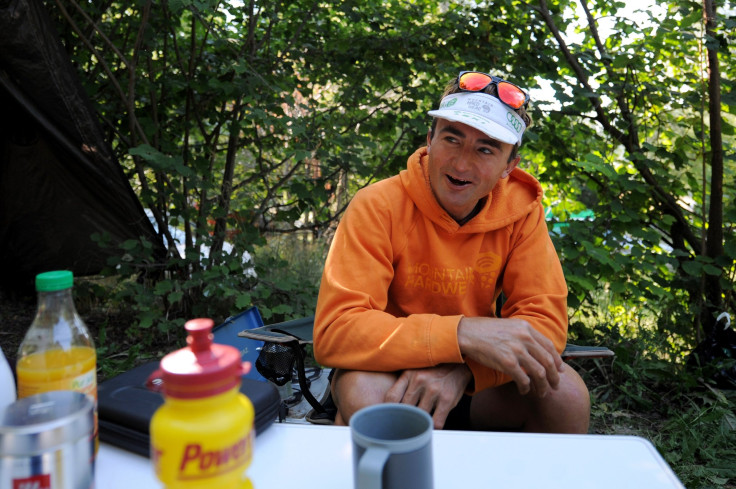Who Is Ueli Steck? Famous Climber Nicknamed 'Swiss Machine' Died In Accident Near Mt. Everest

Ueli Steck, also known as “Swiss Machine,” was killed Sunday in an accident on the Nuptse peak, a mountain in the Khumbu region of the Mahalangur Himal, in the Nepalese Himalayas. The 40-year-old award-winning climber, known for his swift climbs, was attempting to climb Mt. Everest without oxygen via a new route, according to Mingma Sherpa of the Seven Summit Treks company that had organized the expedition, the Guardian reported.
Ang Tsering Sherpa, head of the Nepal Mountaineering Association said: "He had an accident on the Nuptse wall and died. It seems he slipped.” He is assumed to have been alone when the accident occurred as his climbing partner was suffering from a severe frostbite, according to BBC News.
Steck’s last attempt was to climb Mt. Everest through the West Ridge, a route infamous for causing more deaths than successful climbs. The second leg of his expedition would have been to climb Mount Lhotse, the fourth-highest peak in the world.
"Quick day from Basecamp up to 7000m and back," read an update on his Facebook page Wednesday. Steck was a believer in “active acclamatisation [sic]” being the best way to get accustomed to changes in altitude. "My body is as strong as it was never before," he said in a video about the project, adding he was excited for the trip.
See posts, photos and more on Facebook.
Steck had successfully climbed Mt. Everest without oxygen support back in 2012, along with all the 82 peaks over 4000 meters of the Alps, in just 62 days. Steck and his companion David Goettler had found remains of two American climbers in Tibet while attempting to climb a new route up Shishapangma’s south face last year. An avalanche had killed the two climbers — Alex Lowe and David Bridges — in October 1999.
Steck climbed the north face of the Eiger in 2015, one of the most famous walls in the world, in a record time of two hours, 22 minutes and 50 seconds, breaking his previous record of two hours and 47 minutes.
"One of the great climbers of all time," said Veteran British mountaineer Sir Chris Bonington as he paid tribute to the Swiss legend. "What kills most people is the objective dangers, going into an area where there is stone fall or the threat of avalanche," he said as he spoke on BBC's Newshour program.
"The longer you are exposed to that threat, statistically the more likelihood there is of you being hit by one of these things. Whereas if you are moving very fast you are exposed to that danger for a much shorter time. But the people who are climbing at the absolute limit, which he undoubtedly was, the death rate among the very best mountaineers is very high, particularly in the Himalayas,” Bonington added.
British mountaineer Kenton Cool described Steck as "a true inspiration who showed us all what was possible in the mountains and beyond." The British Mountaineering Council paid homage to the "legendary mountaineer and all-round great guy” as well.
In a statement to the Guardian, Steck’s family said the reasons behind the climber’s death were still unclear.
“The family is infinitely sad and asks that the media refrain from speculating about his death out of respect for Ueli. As soon as reliable information becomes available, the media will be informed,” the statement said.
© Copyright IBTimes 2024. All rights reserved.






















